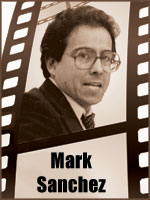 The Smackdown
The Smackdown
Real violence trumps reel violence, although maybe not when selling tickets. “A Mighty Heart” opened small over the weekend ($4 million) and may not grow much. Michael Winterbottom directed this real life horrorshow surrounding the final weeks in the life of Wall Street Journal reporter Daniel Pearl. The stakes are also life and death in Taylor Hackford’s 2000 action drama “Proof of Life.” This movie handled violence theatrically and recouped its $65 million production costs. Both films are sharply scripted, offer real star power–and raise a disturbing question: What leaves the indelible impression on a film, real terror or reel terror?
The Challenger
The terrible events of “A Mighty Heart” unfolded with the whole world watching. Daniel Pearl covered the war on the Taliban as events moved between Afghanistan and Pakistan in early 2002. He was prepping to leave Karachi as he sought that last elusive interview. Danny’s fateful decision had lethal consequences and his kidnap touched off an international manhunt. Pakistani security forces and American officials followed false leads to dead ends as Mariane Pearl endured this ordeal while several months pregnant. Her memoir formed the basis for John Orloff’s taut screenplay. Events wash over crowded, dark streets with slow progress. In this overheated environment Danny Pearl was especially vulnerable: As an American and a Jew his kidnappers accused him of working for the CIA or the Israeli Mossad. His captors –not all– were arrested, but not before committing a final, revolting outrage: They videotaped his beheading.
The Defending Champion
“Proof of Life” places its drama in a fictional South American country, Tecala. Businessman Peter Bowman (David Morse) is grabbed by rebels involved in cocaine trafficking and kidnapping after losing their Soviet benefactors. His employers hire hostage negotiator Terry Thorne (Russell Crowe) to gain Peter’s release. Along the way he and Bowman’s distraught wife, Alice (Meg Ryan) develop a growing attraction. Screenwriter Tony Gilroy includes a prickly sister in law (Pamela Reed) and corrupt local authorities to complicate the job of rescuing Bowman. The action builds to a high-risk finale in the mountains.
The Scorecard
Here is where the question of real/reel terror flexes its muscle. We see the unspeakable evidence on the nightly news. Someday terror may lose the power to outrage. But not yet. Angelina Jolie mesmerizes as Mariane Pearl who maintains dignity and a mighty heart in heartbreaking circumstances. Passion crackles like electricity in Archie Panjabi as Mariane’s friend Asra. Irfan Khan is outstanding as the head of the anti-terrorism unit in Karachi. Dan Futterman bears a striking resemblance to Daniel Pearl. In contrast, “Proof of Life” handles its passions differently. People are tortured and shot in a tableau of high production values and well arranged anomie. The producers found the right man in Russell Crowe; Meg Ryan shows none of perkiness and few of the actorish tics we often associate with her work. Both films made headlines apart from the productions: Crowe and Ryan had an affair that ended her marriage; two dozen members of the production crew suffered altitude sickness shooting at 14 thousand feet in Equador; David Morse’s stand-in died in a location accident. Angelina Jolie apologized for insisting journalists attending the premiere sign a written pledge not to ask about her personal life.
And the winner is…
The Decision
“A Mighty Heart” shows more heart. Neither film denies the power of violence, but it’s blunted, almost prettified by the high technical achievement in “Proof of Life.” Perhaps it would have benefited from being rougher looking. Both try to be even-handed in portraying the third world settings in which the stories take place, neither condemning nor glorifying the people there. “A Mighty Heart” makes the tedium and tension and ultimately, the horror, seem almost palpable. The producers showed tasteful restraint: they did not recreate Daniel Pearl’s murder or show that video (I saw it on my own and regret it). They demonstrate the deepest terror is not inflicted in the streets, but in the human heart. That’s why real terror leaves an indelible mark compared to reel terror, why “A Mighty Heart” will remain vivid long after the other film shows no proof of life. See it now.

I agree that Mighty Heart is the better film, but I’d also say that Mighty heart was overrated by critics and Proof of Life underrated. I think they’re both worth watching.
For whatever reason, while I appreciated Mighty Heart technically, it didn’t draw me in emotionally in the way that I’d hoped it would. It reminded me a lot, actually, of United 93 in its restrained approach to the material. But I thought United 93 was the far better film of the two. Hmm… more fodder for Smackdown? 🙂